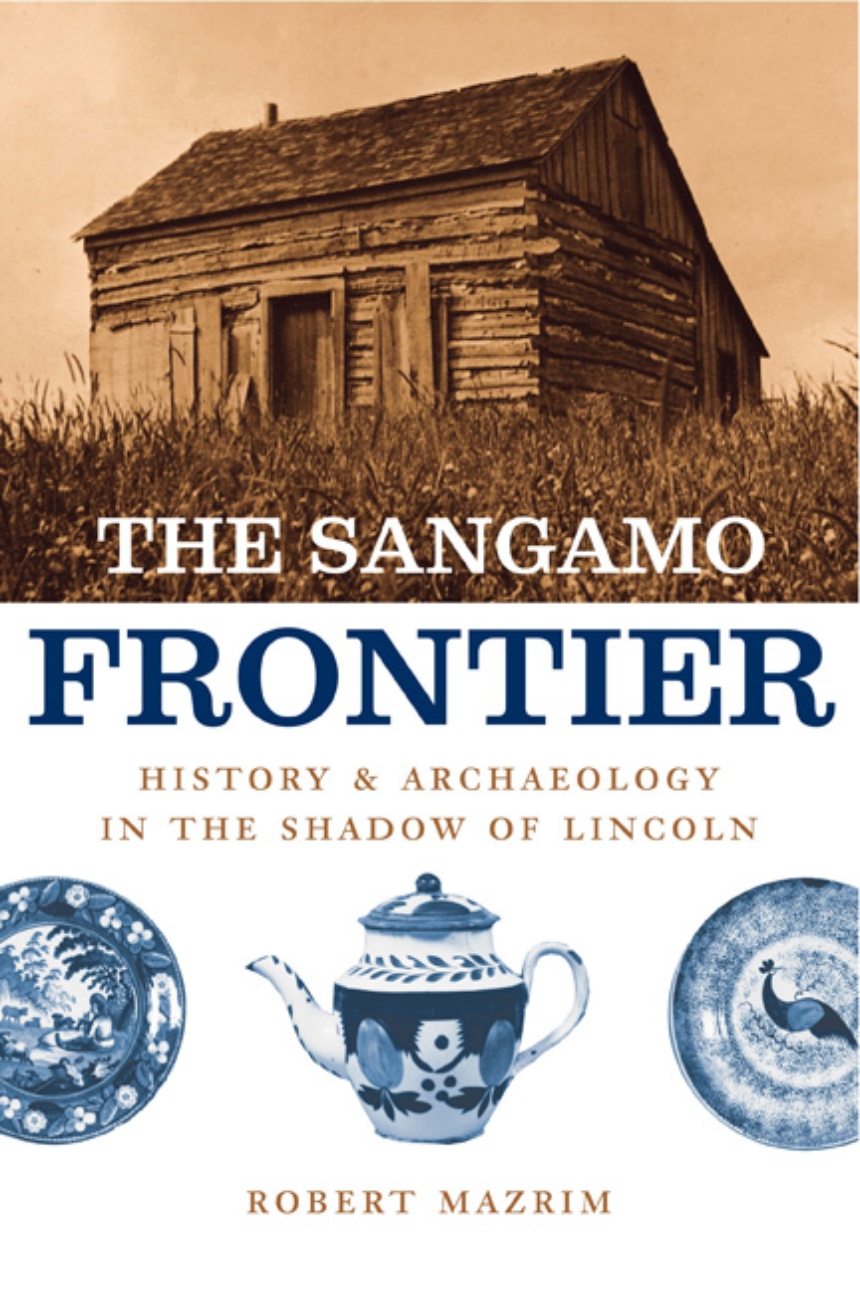The Sangamo Frontier
History and Archaeology in the Shadow of Lincoln
The Sangamo Frontier
History and Archaeology in the Shadow of Lincoln
When Abraham Lincoln moved to Illinois’ Sangamo Country in 1831, he found a pioneer community transforming from a cluster of log houses along an ancient trail to a community of new towns and state roads. But two of the towns vanished in a matter of years, and many of the activities and lifestyles that shaped them were almost entirely forgotten. In The Sangamo Frontier, archaeologist Robert Mazrim unearths the buried history of this early American community, breathing new life into a region that still rests in Lincoln’s shadow.
Named after a shallow river that cuts through the prairies of central Illinois, the Sangamo Country—an area that now encompasses the capital city of Springfield and present-day Sangamon County—was first colonized after the War of 1812. For the past fifteen years, Mazrim has conducted dozens of excavations there, digging up pieces of pioneer life, from hand-forged iron and locally made crockery to pewter spoons and Staffordshire teacups. And here, in beautifully illustrated stories of each dig, he shows how each of these small artifacts can teach us something about the lifestyles of people who lived on the frontier nearly two hundred years ago. Allowing us to see past the changed modern landscape and the clichés of pioneer history, Mazrim deftly uses his findings to portray the homes, farms, taverns, and pottery shops where Lincoln’s neighbors once lived and worked.
Drawing readers into the thrill of discovery, The Sangamo Frontier inaugurates a new kind of archaeological history that both enhances and challenges our written history. It imbues today’s landscape with an authentic ghostliness that will reawaken the curiosity of anyone interested in the forgotten people and places that helped shape our nation.
362 pages | 42 halftones, 45 figures, 13 maps | 6 x 9 | © 2006
Geography: Cultural and Historical Geography
History: American History
Reviews
Table of Contents
Acknowledgments
Introduction: Journey to Sangamo
Part 1: Americans, Frontiers, and Archaeology
1 The Making of an American Frontier
2 The Arrival of Archaeology and the Shadow of Lincoln
Part 2: Illinois in History
3 Before the Americans
4 The Americans
Part 3: Archaeology of the Frontier
5 At Home, 1800–1840
6 Under the House, Behind the House
7 Goods in the Forests
Part 4: The Origins of Sangamo
8 The Hole in the Map
9 A New Frontier
Part 5: The Archaeology of Sangamo
10 Overlooking Wilderness: Excavations at Elkhart Hill
11 Earthenware at Cotton Hill: The Ebey-Brunk Kiln Site
12 The Origins of a State Capital: The Iles Store Site
13 Moses’s Sangamo: Relocating a Lost Town
14 Exploring Moses’s Sangamo: Excavations at Sangamo Town
15 Lincoln’s New Salem: History and Archaeology
16 Behind Lincoln’s New Salem: Archaeology and Revisionism
17 The End of the Trail
Notes
Index
Awards
Illinois State Historical Society: Russell Strange Memorial Book Award
Won
